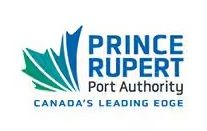Multimedia
Smart Containers and the ROI Dilemma: Turning Visibility into Value

Partner

As the container shipping industry moves toward full-fleet digitalization, investments in smart container technology have surged — bringing real-time visibility, predictive insights, and new operational possibilities. Yet a fundamental challenge remains: how can these innovations translate into tangible, monetizable value?
In this webcast, Erik Christian Lund (EVP Maritime & Logistics, Nexxiot), Thomas Bagge (CEO, Digital Container Shipping Association), and Lars Jensen (CEO, Vespucci Maritime) explore the evolving economics of container IoT and the strategic shifts reshaping how visibility is deployed and monetized across the supply chain.
Drawing on insights on ongoing roll-outs and industry movements, this expert panel will address:
• The internal ROI case for smart containers: operational efficiencies, fleet optimization, and predictive repositioning
• The role of standardization in enabling interoperability and scale across global fleets
• Whether smart containers can finally break open the elusive value-added logistics market
• What adoption at scale looks like and how new predictive capabilities could reshape decision-making
• The broader strategic implications: can smart containers unlock new competitive advantages in an increasingly data-driven industry?
This session offers a candid discussion between industry leaders shaping the future of visibility, connectivity, and value creation in maritime logistics.
Moderator:
Alessandra Barrett, Associate Director, Journal of Commerce by S&P Global
Speakers:
Thomas Bagge, CEO, Digital Container Shipping Association
Lars Jensen, CEO and President, Vespucci Maritime
Erik Christian Lund, Executive Vice President, Maritime & Logistics, Nexxiot
MIDYEAR REPORT: Managing the Uncertainty in Intermodal Rail

Intermodal rail volumes began 2025 on strong footing, but rising geopolitical tensions and trade disruptions have clouded the outlook for the second half of the year. With ocean carriers increasingly blanking sailings out of China, western U.S. railroads are bracing for a drop in international intermodal volume to inland hubs such as Chicago, Dallas, Kansas City, and Memphis. Eastern railroads may also feel some impact on traffic bound for Atlanta and the Ohio Valley.
Without a swift return to global trade stability, the ripple effects are likely to spill into domestic intermodal as well. J.B. Hunt reports that 20% to 30% of its intermodal business originates on the West Coast, closely aligning with Intermodal Association of North America estimates of 28% to 30% originating on the West Coast. Schneider cites a similar range, noting 15% to 25% of its intermodal traffic depends on US imports.
Cross-border volumes with Mexico under the USMCA may provide a modest cushion, but a sharp decline in West Coast demand could lead to a softer peak season and an absence of surcharges for shippers. At the same time, domestic intermodal contract pricing remains stagnant nationwide, with little expectation of movement until truckload spot and contract rates begin to rise.
This webcast will break down all these developments and more. We’ll examine market trends, pricing dynamics, and rail service performance, while also opening the floor to hear what’s on your mind.
Moderator:
Ari Ashe, Senior Editor-Intermodal Rail, Journal of Commerce by S&P Global
Russ Frayer, Director Intermodal, MODE Global
Brian Kobza, Chief Commercial Officer (CCO), IMC Logistics
*Check back soon for more information! Interested in sponsoring this webcast? For more information, please visit: https://subscribe.joc.com/mediasolutions/
Canada Trade and Shipping Outlook

Partner (s):


Amid the sharpest US tariff threat since the 1930s, the Canadian container shipping industry moves forward, working through labor disruptions on both coasts and cargo delays while advancing investment coast to coast. The Canada Trade webinar will highlight major trade trends, and port and other infrastructure investment, while providing insights from on-the-ground on the latest US trade rumblings and implications for Canadian containerized supply chains.
Moderator: Mark Szakonyi, Executive Editor, Journal of Commerce by S&P Global
Speaker(s):
Jeremie Comte, Chief of Staff, OEC Overseas Express Consolidators
Julie Gascon, CEO, Montreal Port Authority
Douglas Smith, Chief Executive Officer, DP World
*Check back soon for more information! Interested in sponsoring this webcast? For more information, please visit: https://subscribe.joc.com/mediasolutions/
Tariffs and Technology: Software’s Role in Navigating Trade Uncertainty

Partner(s):

Importers and exporters have long relied on platforms to manage the tricky nuances of global trade compliance, but recent trade policy actions between the US and its trading partners have shone a brighter light on this corner of the logistics technology world. So-called global trade management software encompasses a large set of functions, from product classification to duty reduction initiatives. With global trade regulations and tariffs changing seemingly by the day, shippers and their service providers are under intense scrutiny to not just be in compliance but also to find strategies that keep them ahead of their competitive peers. This one-hour webcast, encompassing perspective from experts in the world of trade compliance and global trade management technology, will delve into how shippers should prepare themselves to invest in core trade management platforms, upgrade the technology they have, or try new emerging point solutions based on automation.
Moderator: Eric Johnson, Senior Editor, Technology, Journal of Commerce by S&P Global
Speaker(s):
Christina Coulourides, Owner and Founder, Plume Ridge Bottle Shop
Paul Diedrich, Director, Customs Brokerage and Trade Services, Ardent Global Logistics
Gabrielle Griffith, Director, BPE Global
*Check back soon for more information! Interested in sponsoring this webcast? For more information, please visit: https://subscribe.joc.com/mediasolutions/
Container Shipping Outlook: The Asia-Europe Trade

Major ocean trade lanes do not operate in isolation, and although Asia-Europe has largely been spared the mass confusion of on-again, off-again tariffs coming out of the administration of US President Donald Trump, the chaos on the trans-Pacific is likely to spill over. The US tariffs slammed the door on its Chinese imports virtually overnight as shippers put the brakes on shipments, and that will have left huge volumes of container equipment stuck in China as shippers prepared for the spring season. But there may be a silver lining in that it could make Chinese manufacturing more competitive as factories turn to other major markets to mitigate the loss of US imports. The problem is that the world appears to be sliding toward a global recession, and that will make consumers in already-struggling European economies even less likely to spend, and less spending translates into fewer loaded containers arriving on ships from Asia. With that as the current state of affairs, and with an understanding that the narrative could change again as it has so often in the last three months, it's a good time to take stock of the Asia-Europe trade in this webcast led by Journal of Commerce Senior Europe Editor Greg Knowler. During the hour-long event, Greg will be joined by subject matter experts who will discuss these issues, as well as the new carrier alliances, falling rates, rising capacity, the Red Sea diversions, and the growing costs to shippers of tightening decarbonization regulations.
Moderator: Greg Knowler, Europe Editor, Journal of Commerce by S&P Global
Speaker(s):
Alexandra Ilascu, Vice President, Global Sea Logistics Trade Manager, Asia / ISC / Middle East - Europe, Khuene + Nagel
Alexander Nowroth, Managing Director, Lebenswerk Consulting Group
Antonios Rigalos, Managing Partner, ShiftX
*Check back soon for more information! Interested in sponsoring this webcast? For more information, please visit: https://subscribe.joc.com/mediasolutions/
Recent News and Analysis
Maritime News
- MSC agrees to reflag 12 container ships in India in diversification push
- Year-long pause on US port fees targeting China vessels to start Nov. 10
- Trade deal could boost short-term China imports, but uncertainty lingers
- US port capacity lagging ahead of potential volume growth: MSC
- DP World lines up $5 billion investment program for India expansion
Surface News
- Intermodal savings rose in Q3, but might not yield high rates in ‘26
- CPKC-CSX target 2026 as big year for Mexico-Texas-East Coast trade
- Top LTL carriers maintain profit while planning paths to freight recovery
- CPKC slams UP, NS on Meridian congestion, merger plans
- J.B. Hunt’s East Coast strategy is shifting as rail alliances realign
Air Cargo News
- UPS volumes grow overseas in Q3 as China-to-US shipments drop 27%
- Trans-Pacific air cargo to be driven by ‘vertical’ markets: forwarders
- Rival Kuehne + Nagel circles DSV customers as ocean tender season nears
- China air freight demand, rates surge on new 100% US tariff
- Post-tariff air freight market diversifies into ‘US-plus one’ strategy: Tiaca
Supply Chain News
- Increased supply chain scrutiny at odds with customs enforcement capability
- Year-long pause on US port fees targeting China vessels to start Nov. 10
- Trade deal could boost short-term China imports, but uncertainty lingers
- US, China suspend reciprocal port fees as part of wider trade deal
- UPS volumes grow overseas in Q3 as China-to-US shipments drop 27%


